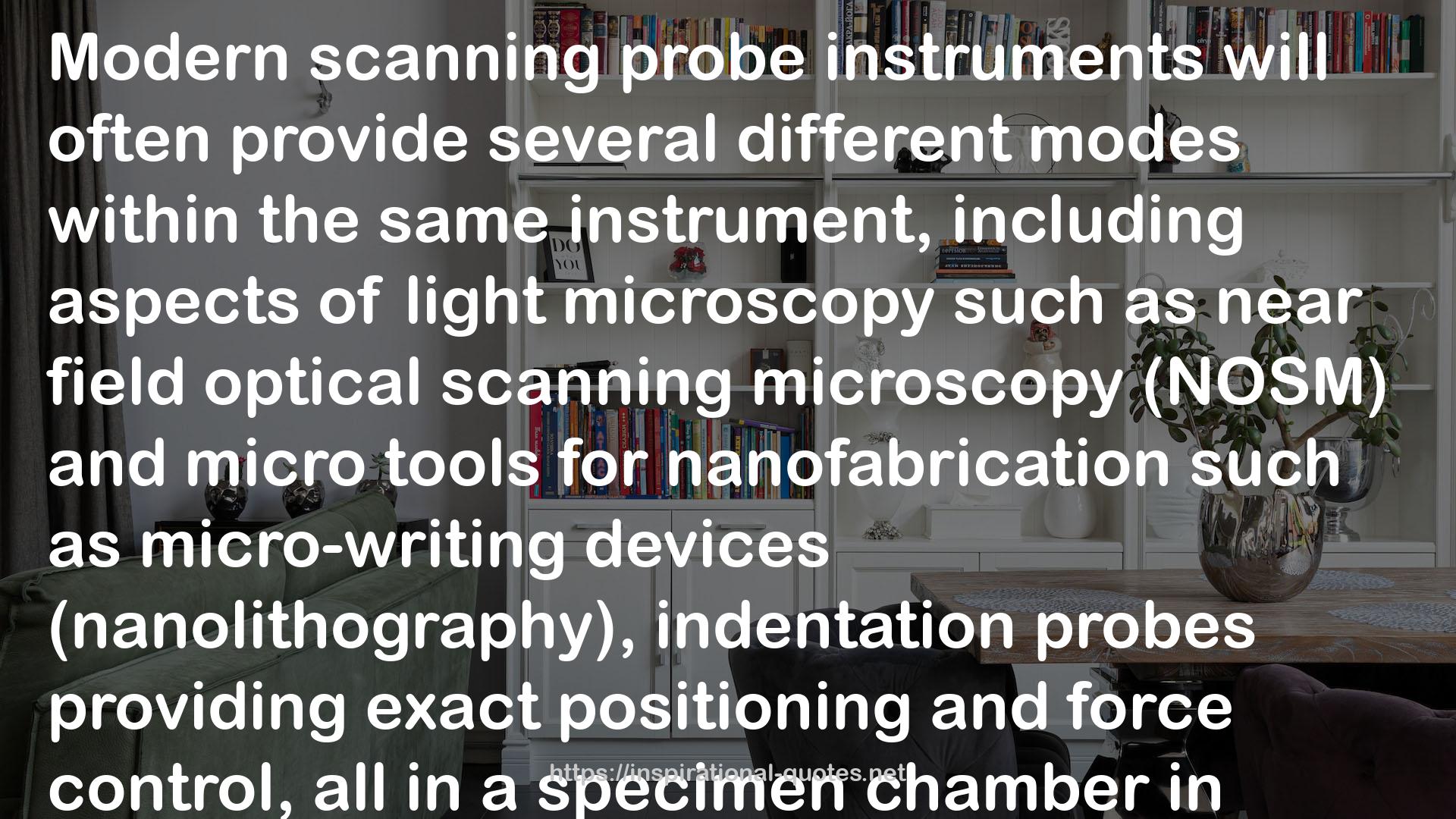" Modern scanning probe instruments will often provide several different modes within the same instrument, including aspects of light microscopy such as near field optical scanning microscopy (NOSM) and micro tools for nanofabrication such as micro-writing devices (nanolithography), indentation probes providing exact positioning and force control, all in a specimen chamber in which both the temperature and gaseous environment can be precisely controlled. This type of scanning probe microscopy has made it possible to investigate a surface phenomenon termed surface plasmon polaritons (SPPs for short), which are surface electromagnetic waves that propagate between the interface of a metal and a dielectric (insulator). More explanation of SPPs would require a VSI on surface physics, but suffice it to say, the scanning plasmon near field microscope has made it possible to work towards practical exploitation in the applications of SPPs (which make it possible to ‘package’ light in smaller quantities than ever before) in optics, data storage, solar cells, chemical cells, and biosensors. "
― , Microscopy: A Very Short Introduction
